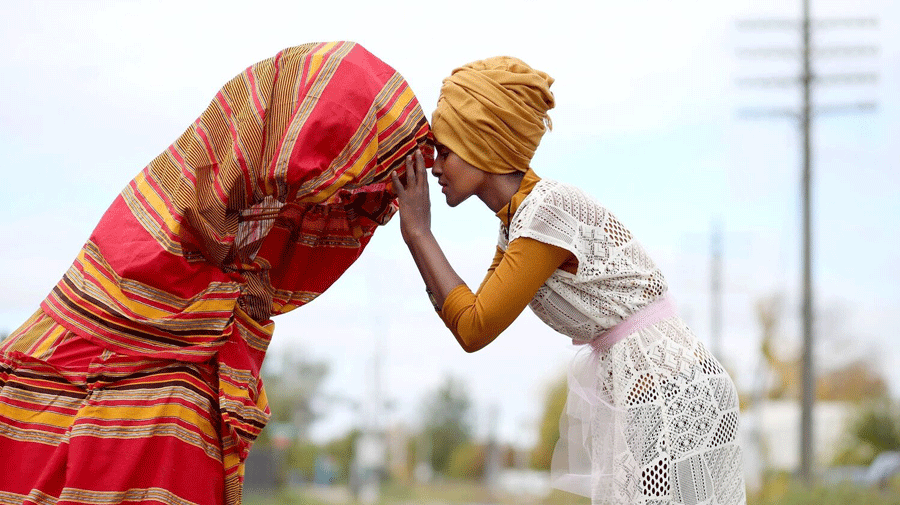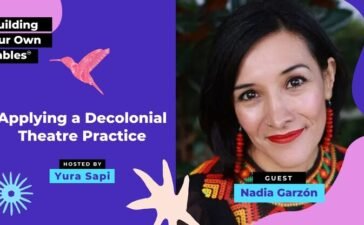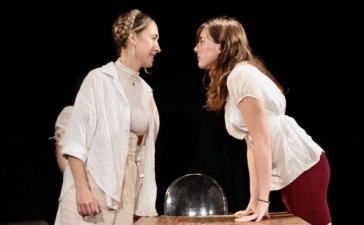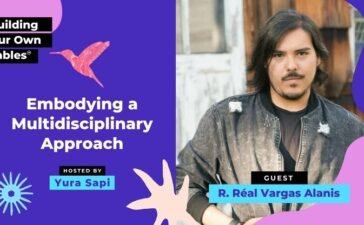Thereafter, I got a job marketing theatre to the East African community. I thought, “I already spend so much time in the East African area, so this will be easy earning for me.” But this was the most difficult job to do. Nobody in this community wanted to go see what theatre white people are creating. I was essentially hired to get more East Africans to watch plays. Watching these plays, which often featured African American actors, I recalled listening to my grandmother tell me stories at night in Somalia during the Civil War era. There’s something extremely familiar, beautiful, and simply soul-feeding about our shared struggles.
Small and mighty acting roles started to emerge for me, the types that theatres give untrained actors. I played toilet paper, part of a snake, and, my favorite, a Nazi student who spits like a sailor. Most of the theatres that gave me these first opportunities no longer exist. They folded because of the pandemic or the unforgivingly harsh funding environment in the US arts ecosystem. I loved these theatre spaces that are dissolved now, whether it be Patrick Cabaret, or Intermedia Arts. These small, under-the-radar, community-based, and fiercely independent institutions are what made it possible for artists like me to get their start. It’s because of these places that now, as an artist, I am able to interrogate the past with gentleness and weave the future with a sense of hope.
When I think about that hope, I often find myself working through the impact of trauma on identity formation—how traumatic memories, for instance, carry themselves through one’s present life.
I simply wish to rest. To create art that is about exploring joy and exposing healing, not from a place of having to prove my humanity. Art that simply is soul-feeding, like honey on watermelon.
The Somali hut, or “aqal,” is an integral part of my work and symbolizes the essence of my cultural heritage. The aqal is a traditional nomadic structure, a dome-shaped hut made from natural materials, showcasing the ingenuity and adaptability of Somali people. My artistic interpretation of the aqal, My Aqal, serves as a bridge connecting individuals to the global refugee crisis, encouraging them to imagine the process of building a home for someone in need. It reflects the resilience and resourcefulness of my ancestors who made homes wherever they were, using their hands to weave a life from what nature provided.
We Muslim Americans do not experience gentleness when it comes to the exploration of our stories, our beliefs. Instead, we are pigeonholed into proving our innocence and proving the existence of peace within our value system and our private lives. I simply wish to rest. To create art that is about exploring joy and exposing healing, not from a place of having to prove my humanity. Art that simply is soul-feeding, like honey on watermelon.
My latest project, the first permanent Healing Aqal[hut] in rural Minnesota, embodies this philosophy. This project is a combination of everything I’ve done. It speaks of my cultural heritage, the way my ancestors equitably coexisted with nature, the way they wove with their bare hands, and made homes wherever they were. There is an imaginable abundance in nature, which blooms people’s hearts to be endlessly generous in kindness towards other beings. I’m trying to unearth my ancestors’ ecological wisdom of using nature as a tool for healing. I’m trying to create a home for our collective healing, and I’ve only arrived at this journey by allowing myself to just be lost.
You Might Also Like
Applying a Decolonial Theatre Practice with Nadia Garzón
By Yura Sapi, Nadia Garzón. Nadia Garzón, founder and executive director of Descolonizarte Teatro in Orlando, Florida, prioritizes a decolonial...
How Pub Theatres Create a Haven for Independent Performance in the United Kingdom
By Sophie Pell. Pub theatres bring theatre to communities in the United Kingdom through the combined business model of a...
Embodying a Multidisciplinary Approach with R. Réal Vargas Alanis
By Yura Sapi, R. Réal Vargas Alanis. R. Source link...
A Performance of Acting Out
By . Acting Out revolves around the relationship between the artist and his body on stage, inspired by the revolutionary...










